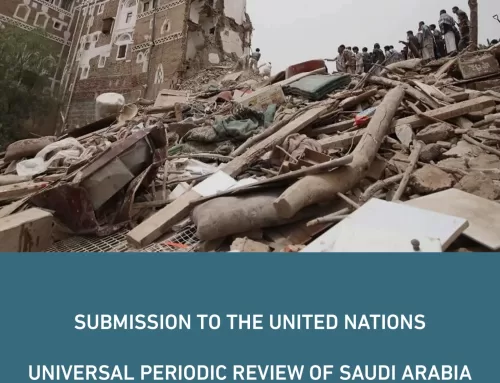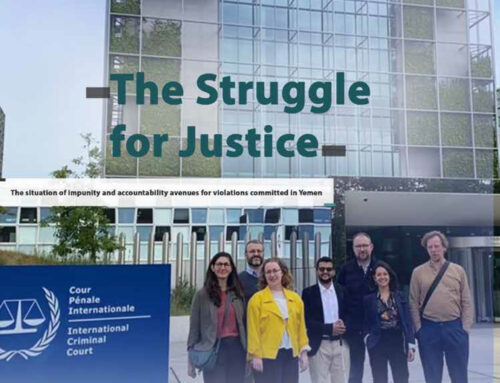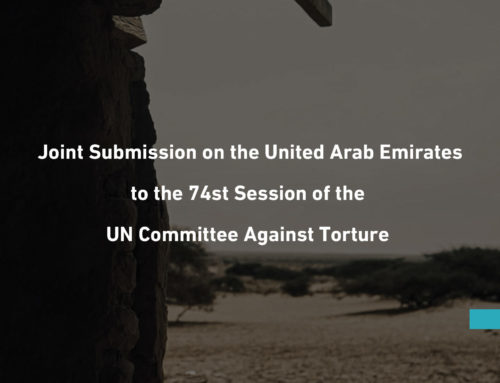Executive SummaryOn 21 September 2014, Ansar Allah armed group (Houthis) seized control over the Yemeni capital Sana’a by armed force. Afterwards, the Peace and National Partnership Agreement was signed between the group and the other political factions under the United Nations’ sponsorship. This was followed by tension that lasted for weeks where eventually on 20 January 2015, Ansar Allah armed group forced house arrest on both president Abd Rabbu Mansour Hadi and prime minister, at the time, Khaled Mahfouz Bahah as well as members of the cabinet. On 21 February 2015, president Hadi fled to Aden. A month later, on 21 March 2015, Ansar Allah militants and forces loyal to former president Ali Abdullah Saleh, Ansar Allah’s ally, advanced towards Taiz all the way to Aden in the South in addition to other Yemeni governorates and regions.The advancement of Ansar Allah and Saleh’s forces formed a beginning of a new level of the violent conflict. As Ansar Allah armed group launched airstrikes on the presidential palace, president Hadi’s residence, in Aden after gaining full control of the air force, the president fled to the Saudi capital, Riyadh, on 25 March 2015. Then governmental forces loyal to president Hadi were formed as well as local armed “resistance” groups which mainly consisted of the Yemeni Congregation for Reform (Islah), Salafi groups, Southern Movement, Jihadi groups as well as other groups and parties loyal to president Hadi.As a result of president Hadi’s escape to Riyadh, the Kingdom of Saudi Arabia launched a military campaign that involves a coalition of nine Arab states at the early hours of Thursday 26 March 2015. The coalition’s campaign was requested from the Gulf Cooperation Council by president Hadi and was launched against Ansar Allah armed group and their ally Saleh. The campaign’s intervention aimed to restore Hadi’s power and reinstall his legitimacy.In the city of Taiz, Militants that belong to Ansar Allah armed group (Houthis) as well as individuals from the Special Security Forces (Central Security) attacked two separate demonstrations that were protesting the armed existence of Ansar Allah group and their ally Saleh on Tuesday 24 March 2015. The two attacks killed at least 8 protestors and injured around (108) protestors. Right after that, the armed conflict in Taiz broke out in a way that made the city of Taiz one of the most prominent areas of clashes where Ansar Allah militants and their ally Saleh’s forces are fighting the “popular resistance” forces and the army loyal to president Abd Rabbu Mansour Hadi. Armed forces of the popular resistance and the army loyal to president Hadi have been backed up by the Saudi-led Arab coalition air force. The majority of fighting took place in the city of Taiz but expanded lately to the rural and suburban areas of the city.As the bloody conflict progresses with increasing intensity and the violence map expands, Yemen, which is the poorest among Arab states, has witnessed extremely deteriorating conditions. This deterioration is accompanied by an unprecedented break down in the case of human rights. An appalling list of violations of the International Humanitarian Law and the International Human Rights Law by all conflict sides has risen in various Yemeni cities and regions.The city of Taiz is the most prominent Yemeni city that was reached and torn by the violent conflict. This city and some of its rural areas present a clear manifestation of the darkest and most tragic forms of war. It also manifests the wide heavy toll of war’s most grave violations such as killing through various means, destruction and blockade. These violations have affected civilians and undermined their lives during the entire period of the armed conflict the city has witnessed.In the context of the armed ground conflict during the period between April 2015 and March 2016, which is the focus of this report, Ansar Allah group (Houthis) and former president Saleh’s forces are responsible for the majority of the bloody and indiscriminate attacks, which resulted in killing and injuring hundreds of civilians in the city of Taiz. On the ground, both warring sides share a pattern of locating and deploying in the middle of heavily residential sites and launching attacks from and on these sites.
Thousands of civilians found themselves stuck between the two conflict sides where they face various forms of violations. Among the most apparent violations are those presented in killing, maiming, attacking medical staff and medical facilities, targeting schools and occupying them for military purposes and military recruitment of children in addition to Ansar Allah group forcing a suffocating blockade from time to time on the city to block the entry of medical and humanitarian relief and aid. Similarly, the popular resistance assaulted relief organizations and humanitarian aid warehouses and carried out field executions.
In its report “Chapters from Hell”, Mwatana Organization for Human Rights documents a number of incidents where hundreds of civilians were killed and injured in addition to the livelihood of thousands that was damaged midst the armed ground conflict and the violations of the International Humanitarian Law committed by the conflict sides between April 2015 and March 2016. Committing these violations is still ongoing after March 2016.
During the preparation of this report, Mwatana Organization used a methodology of investigative fieldwork. Investigative visits and direct interviews with primary information sources on incidents were conducted alongside the collection of supporting documents. Fieldwork and investigation of the data mentioned in this report took place between May 2015 and October 2016. The organization conducted at least (425) interviews in Arabic with victims who survived, relatives of victims, eyewitnesses as well as humanitarian and medical staff and relevant stakeholders. Mwatana Organization also collected at least (55) field observations, which observe cases of recruiting children for military purposes.
This report contains (177) incidents, investigated by Mwatana Organization, where the International Humanitarian Law and the Customary Humanitarian Law were violated. The organization’s team has also collected testimonies regarding the blockade and restrictions imposed on entry of food, commercial and medical goods as well as humanitarian aid to the city.
Mwatana Organization has also consulted with international experts to use their analysis in the area of International Humanitarian Law and the Customary Humanitarian Law in addition to expertise in arms in order to analyze the weapons used in attacks that are documented in this report.
The report considered the Central Market (the intersection of Jamal’s street and al-Tahrir’s street) the center of the city of Taiz. Locations where conflict sides are based and locations of the attacks were determined accordingly. Google maps and documented testimonies by Mwatana Organization’s team were used to estimate distances. Mwatana Organization consulted with an expert who is specialized in space planning in Taiz governorate in order to measure distances and directions as well as to determine the locations of attacks. Additionally, a number of consultants and experts were consulted.
Regarding indiscriminate attacks and incidents of firing bullets and anti-aircraft ammunition, this report “Chapters from Hell” sheds light on (32) indiscriminate attacks and (22) incidents of firing live ammunition of bullets and anti-aircrafts. In these attacks and incidents, at least (103) civilians were killed including (50) children and (14) women. Furthermore, (229) civilians were injured including (98) children and (16) women in the period between April 2015 and March 2016.
The attacks and incidents documented in this report present a sample of scores of attacks and incidents that Mwatana Organization documented during the same period. Mwatana Organization has documented the killing of at least (217) civilians including (87) children and (32) women as well as cases of (479) civilians who were injured among whom were (189) children and (48) women.
Download the report
Report PDF
Press Release
(Click here)






